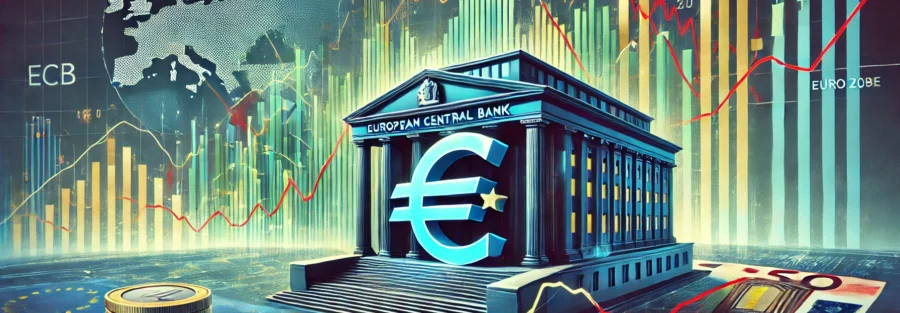Euro zone markets experienced fluctuations on Thursday after the European Central Bank (ECB) shifted away from its long-standing hawkish stance, but analysts remained divided on the signals regarding the pace of future rate cuts.
Initially, it seemed favorable for markets anticipating swift rate cuts from the ECB next year, considering the weakening economic outlook, potential tariffs from U.S. President-elect Donald Trump, and political instability in France and Germany.
The ECB, which implemented its fourth rate cut of the year on Thursday, no longer committed to keeping “policy rates sufficiently restrictive for as long as necessary” to bring inflation down.
While the ECB expressed confidence that inflation would return to its 2% target on a “sustained basis,” it tempered this by stating it was not tied to a specific rate path, offering little reassurance to markets expecting consecutive rate cuts in the coming year.
As ECB President Christine Lagarde spoke, markets remained cautious, causing interest-rate sensitive German two-year yields to rise by about 5 basis points and Italian 10-year yields to increase by over 10 basis points.
“I can understand why the markets took this as somewhat hawkish, as she didn’t fully endorse the market’s pricing as expected,” said Lyn Graham-Taylor, senior rates strategist at Rabobank.
Analysts pointed out that one factor unsettling markets was Lagarde’s remarks on the so-called ‘neutral rate’, which neither stimulates nor restricts the economy. She noted that policymakers did not discuss this rate, adding to the uncertainty.Markets are betting that the European Central Bank’s key interest rate will decrease to around 1.75% by the end of 2025, which is at the lower end of the range (1.75%-2.5%) that ECB President Christine Lagarde mentioned on Thursday.
Lagarde also noted that the neutral rate, which neither stimulates nor restricts the economy, was now considered to be “a little higher” than before.
Arne Petimezas, director of research at Dutch broker AFS Group, pointed out that Lagarde’s comments on services inflation remaining elevated made her sound “quite hawkish.”
This created confusion among investors, as the euro dropped by around 0.3% to $1.0468 during afternoon European trading, before recovering to $1.05.
What’s Next?
Despite Thursday’s market fluctuations, the overall outlook for ECB policy expectations remained largely unchanged. Traders are still betting on rapid rate cuts, expecting a reduction of over 120 basis points by the end of 2025—slightly lower than prior to the ECB’s decision.
Markets also still anticipate a notable chance of larger 50 basis-point cuts at the next two meetings—around a 20% probability in January and nearly 30% in March.
Some analysts, however, believe the direction remains clear, a point Lagarde herself was explicit about.
“Lagarde was as dovish as she could be,” said Piet Christiansen, chief analyst at Danske Bank. He highlighted her comments on inflation risks being more balanced, labor demand weakening, and the downside risks to growth.
She “kept the door open for the market to speculate on a jumbo rate cut.”
While cautious about the neutral rate, Lagarde indicated that the ECB would likely discuss it “more and further as we approach its eventual level.””I was particularly struck by her final remarks. She said ‘when we get to the neutral rate,’ not ‘if.’ There is no ambiguity in her words about the direction of policy,” said Frederik Ducrozet, head of macroeconomic research at Pictet Wealth Management.
Meanwhile, the ECB revised its growth forecast, projecting 1.1% growth for next year and 1.4% in 2026. These figures are higher than a recent Reuters poll, which forecasted 1% growth for next year and 1.2% for 2026.
Carsten Brzeski, ING’s global head of macro, expressed concern that the ECB was placing too much focus on inflation, particularly as many believe the central bank was slow to raise rates when inflation initially surged.
Indeed, some policymakers had initially pushed for a more aggressive rate cut on Thursday, concerned that new U.S. tariffs could negatively impact economic growth, according to three sources who spoke to Reuters.
“By focusing too much on past mistakes, they risk making a new one — being too slow in responding to the economic challenges ahead,” Brzeski said.





